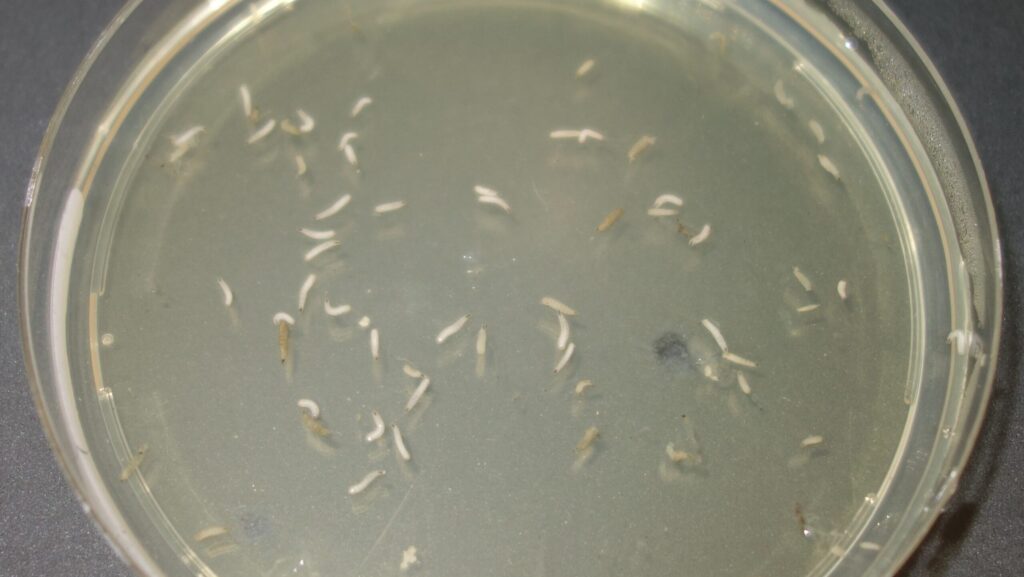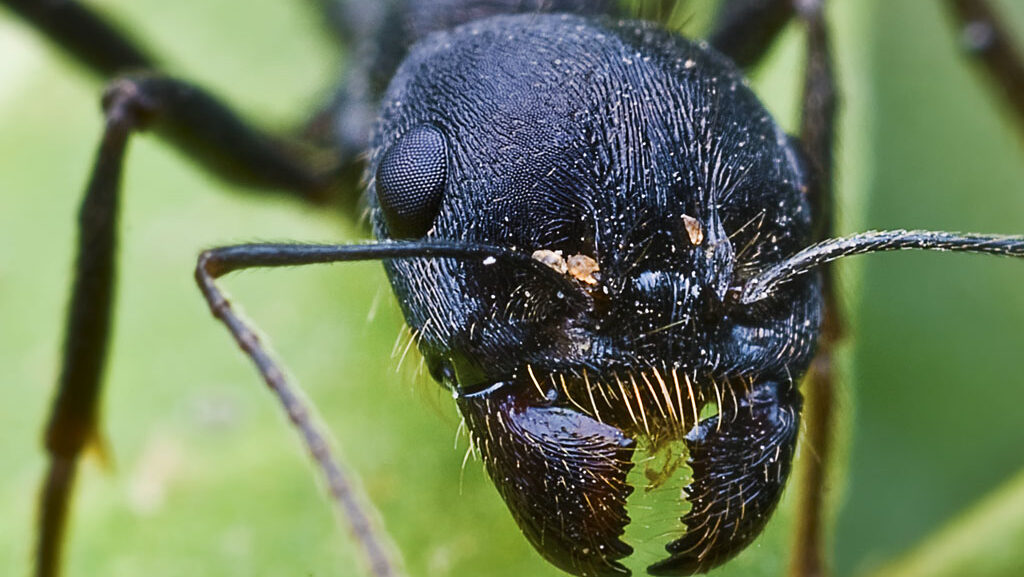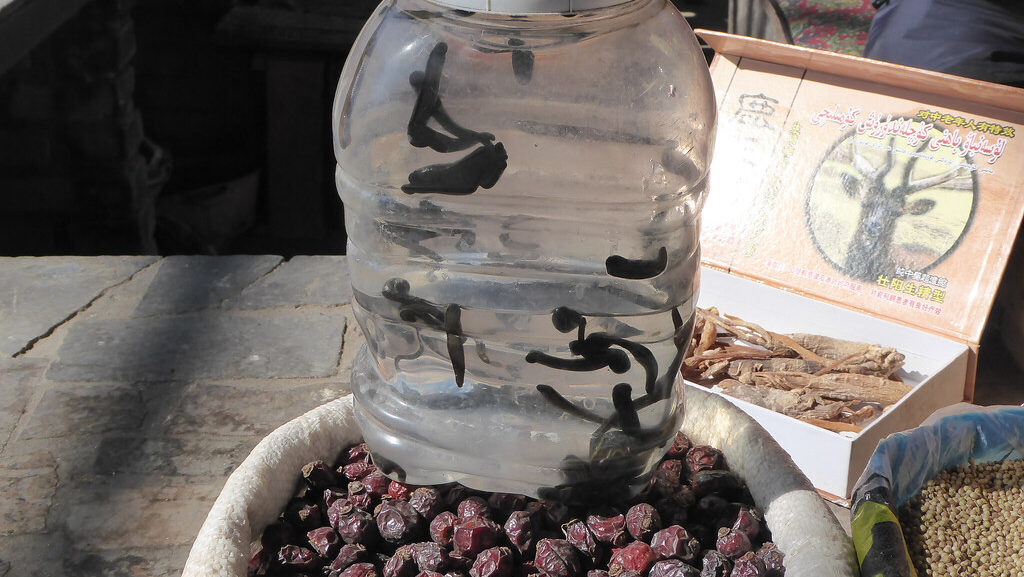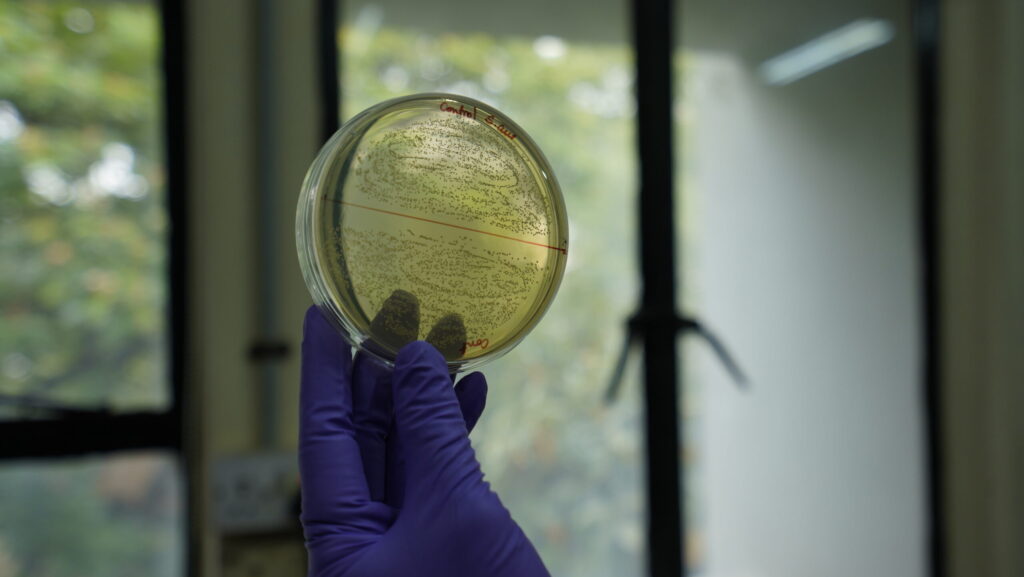In a surprising twist of modern medicine, some of our smallest and often most feared creatures are becoming heroes in hospitals around the world. Insects—those six-legged organisms we typically swat away—have valuable therapeutic properties that medical professionals are increasingly harnessing. From maggots cleaning wounds to bee venom treating chronic conditions, the field of insect-based medicine is experiencing a remarkable renaissance. This article explores the fascinating intersection of entomology and healthcare, examining how insects that many consider pests are actually becoming powerful tools in medical treatment and drug development.
The Ancient Roots of Insect Medicine

The medical use of insects isn’t a new phenomenon but rather a return to ancient wisdom with modern scientific validation. Historical records show that traditional healers across civilizations from China to Egypt, Maya to Aboriginal Australia, utilized insects for their medicinal properties for thousands of years. In ancient China, ants were prescribed for arthritis, while Native American healers used blister beetles to treat skin conditions. European medicine during the Middle Ages documented the application of maggots to battlefield wounds, noting their ability to prevent infection and promote healing. These traditional applications, once dismissed as primitive by modern medicine, are now being scientifically investigated and validated using contemporary research methodologies, creating a fascinating bridge between ancient practices and cutting-edge medical science.
Maggot Therapy: Nature’s Surgical Assistants

Maggot Debridement Therapy (MDT) represents one of the most successful reintroductions of insect medicine into modern healthcare. The procedure uses sterile larvae of the green bottle fly (Lucilia sericata) to clean non-healing wounds by precisely removing dead tissue while leaving healthy tissue untouched—a level of precision that sometimes exceeds surgical debridement. These medical maggots work through a three-pronged approach: they secrete powerful digestive enzymes that liquefy dead tissue, physically consume the necrotic material, and release antimicrobial compounds that help fight infection. MDT has proven particularly effective for diabetic ulcers, pressure sores, and wounds infected with antibiotic-resistant bacteria, offering hope for patients who have exhausted conventional treatment options. The FDA approved maggot therapy as a medical device in 2004, representing a significant milestone in the acceptance of insect-based treatments in modern medicine.
The Science Behind Maggot Healing

The healing power of medicinal maggots extends far beyond their mechanical debridement capabilities, involving complex biochemical interactions. Research has identified several bioactive molecules in maggot secretions that promote various aspects of the healing process. These include antimicrobial peptides that kill bacteria (including MRSA), proteolytic enzymes that break down dead tissue, and growth-promoting factors that stimulate new tissue formation. Studies have shown that maggot secretions can modulate the human immune response, decreasing inflammation in chronic wounds and shifting the wound environment from a chronic inflammatory state to a healing state. Additionally, maggots appear capable of disrupting bacterial biofilms—protective barriers that make bacterial infections particularly difficult to treat with conventional antibiotics. This multi-faceted approach to wound healing makes maggot therapy particularly effective where single-target approaches have failed.
Apitherapy: The Therapeutic Use of Bee Products

Apitherapy encompasses a range of medical treatments derived from honeybee products, each with distinct therapeutic applications. Bee venom therapy involves the controlled application of bee venom to treat conditions like arthritis, multiple sclerosis, and chronic pain, with clinical studies suggesting anti-inflammatory and immune-modulating properties. Propolis, the resinous mixture bees use to seal their hives, contains over 300 active compounds with demonstrated antimicrobial, antioxidant, and anti-inflammatory properties, making it valuable for wound healing and fighting infections. Royal jelly, produced to feed developing queen bees, contains unique proteins and fatty acids being investigated for potential benefits in tissue regeneration and age-related conditions. Honey itself, particularly medical-grade varieties like Manuka honey, is increasingly used in clinical settings for wound dressing due to its antimicrobial properties and ability to create an optimal healing environment. Together, these bee-derived substances represent a pharmacy of natural compounds with diverse medical applications.
Bee Venom’s Promise for Chronic Conditions

The therapeutic potential of bee venom has sparked particular interest for its possible applications in treating debilitating chronic conditions. Melittin, the primary component of bee venom, has demonstrated significant anti-inflammatory properties that may benefit conditions like rheumatoid arthritis by reducing joint inflammation and pain in clinical studies. Multiple sclerosis patients have reported symptom improvement through controlled bee venom therapy, with research suggesting the venom may help modulate immune responses that damage nerve coatings. Perhaps most excitingly, recent research has revealed promising anti-cancer properties, with studies showing that certain bee venom components can selectively target and destroy cancer cells while sparing healthy cells—particularly notable in treatment-resistant forms of breast cancer, melanoma, and certain leukemias. The precision of bee venom’s effects on specific molecular targets has researchers exploring its potential for development of new drugs that could replicate these benefits without the risks of allergic reactions associated with direct venom use.
Ants: Ancient Chinese Medicine to Modern Pharmaceuticals

Certain species of ants have a long history in traditional Chinese medicine, where they’ve been used for over 3,000 years to treat arthritis, hepatitis, and sexual dysfunction. Modern scientific inquiry has begun validating some of these traditional uses, identifying bioactive compounds in ant venom and bodies. For example, peptides isolated from fire ant venom show promising antimicrobial properties that could help address antibiotic resistance—one of medicine’s most pressing challenges. The Chinese medicinal ant Polyrhachis vicina contains unique proteins and zinc-related compounds being studied for potential liver-protective effects and immune system regulation. Additionally, researchers have found that some ant species produce powerful natural antibiotics in their bodies to protect their colonies from pathogens—compounds that pharmaceutical researchers are now investigating for human applications. The convergence of traditional knowledge and modern analytical techniques is revealing ants as a potential source of novel drugs for conditions ranging from pain management to infectious disease control.
Leeches: Blood-Sucking Surgeons’ Assistants

Medicinal leeches (particularly Hirudo medicinalis) represent one of the most established insect-adjacent therapies in modern medicine, playing a crucial role in microsurgery and reconstructive procedures. When surgeons reattach severed fingers, create skin flaps, or perform delicate tissue transplants, blood often congests in the reattached tissues because veins heal more slowly than arteries. Leeches solve this problem by drawing off excess blood and simultaneously injecting a complex cocktail of bioactive compounds including hirudin (a powerful anticoagulant), vasodilators, and anti-inflammatory agents that improve blood flow in the compromised tissue. FDA-approved for medical use since 2004, these creatures have saved countless limbs and tissues that might otherwise have been lost due to venous congestion. Modern leech therapy is performed under controlled clinical conditions using specially raised, laboratory-certified leeches that are applied for precise periods before being humanely disposed of, representing a sophisticated integration of natural biological systems with advanced surgical techniques.
Blister Beetles and Cancer Research

Blister beetles produce a defensive compound called cantharidin that has emerged as a subject of serious interest in oncology research. This potent vesicant, historically known as “Spanish fly,” causes blistering on contact but also possesses remarkable abilities to target specific cellular mechanisms. Research has shown that cantharidin and its derivatives can inhibit protein phosphatases that are crucial for cancer cell proliferation, offering potential selective toxicity against malignant cells. Clinical investigations are exploring modified versions of cantharidin for treating various cancers, including liver, colorectal, and certain difficult-to-treat leukemias. Traditional Chinese medicine has used blister beetles for centuries, with modern research now isolating and refining the active compounds to maximize therapeutic effects while minimizing toxicity. This represents a classic example of bioprospecting—the scientific investigation of traditional remedies to identify and develop new pharmaceutical agents—and highlights how even defensive toxins evolved by insects can become valuable tools in fighting human disease.
Insect Antimicrobial Peptides: Fighting Superbugs

The rising global crisis of antibiotic resistance has turned scientific attention to insects as a potential source of novel antimicrobial compounds. Insects possess remarkably effective immune systems that rely heavily on antimicrobial peptides (AMPs)—small proteins that can rapidly kill bacteria, fungi, and even some viruses through mechanisms fundamentally different from conventional antibiotics. These insect-derived AMPs often work by directly disrupting microbial cell membranes rather than targeting specific metabolic pathways, making it more difficult for pathogens to develop resistance. Researchers have identified over 150 distinct AMPs from various insect species, including defensins from flies, cecropins from moths, and attacins from bees, many showing activity against multidrug-resistant “superbugs” that conventional antibiotics cannot treat. The diversity of these compounds reflects insects’ evolutionary battles with countless pathogens across millions of years, essentially providing researchers with a vast natural pharmacy of pre-tested antibiotic candidates. Several insect-derived AMPs are currently in clinical development phases, offering hope for new weapons against increasingly untreatable infections.
Insect Venoms as Pain Management Tools

The complex cocktails of compounds found in insect venoms contain numerous molecules that interact with pain pathways in ways that could revolutionize chronic pain management. Researchers studying tarantula venom have identified peptides that can selectively block pain signals without affecting other nerve functions, potentially offering relief without the side effects or addiction risks of opioids. Components in bee venom appear to desensitize pain receptors through repeated exposure, explaining the reported benefits for chronic pain conditions and spurring development of purified venom components as potential analgesics. Perhaps most remarkably, the venom of the Australian Fraser Island funnel-web spider contains a peptide that specifically blocks the ion channel responsible for transmitting pain signals after nerve injuries, potentially offering relief for difficult-to-treat neuropathic pain. With the global burden of chronic pain affecting over 1.5 billion people and limited effective treatments available, these insect-derived compounds represent a promising frontier in pain medicine, potentially offering targeted relief where conventional analgesics have failed.
Silk: Beyond Sutures to Tissue Engineering

While technically a product rather than a direct medicinal use of insects, silk from silkworms and certain spiders represents one of the most promising insect-derived materials in modern medicine. Silk’s unique combination of strength, biocompatibility, and biodegradability makes it ideal for numerous medical applications beyond traditional surgical sutures. Researchers have developed silk-based scaffolds that support the growth of various human tissues, from skin and cartilage to bone and nerve tissue, offering new possibilities for regenerative medicine. The precise control possible in silk protein production allows scientists to engineer materials with specific mechanical properties and degradation rates tailored to different medical needs. Some of the most cutting-edge applications include silk microneedles for painless drug delivery, silk hydrogels for sustained release of medicines, and silk-based implants for controlled release of therapeutic compounds. Perhaps most remarkably, silk can be processed at room temperature using water-based chemistry, avoiding the harsh chemicals often required for synthetic biomaterials and making it both environmentally friendly and highly compatible with biological tissues.
Ethical Sourcing and Welfare Considerations

As insect-based medicines gain prominence, the ethical dimensions of their production have become increasingly important to researchers, healthcare providers, and patients alike. Modern medical insect breeding facilities adhere to strict protocols that ensure the insects are raised in appropriate environmental conditions and handled humanely throughout their lifecycle. For therapies like maggot debridement, medical-grade insects are specifically bred in sterile laboratory conditions, ensuring they are free from potential pathogens and raised on controlled diets to optimize their therapeutic properties. The question of insect sentience and capacity for suffering continues to be debated, with researchers adopting precautionary approaches that minimize potential distress even as the scientific understanding of insect consciousness evolves. Additionally, sustainable harvesting practices are crucial for therapies utilizing wild-sourced insects or their products, with conservation biologists increasingly involved in establishing guidelines that prevent overexploitation of natural populations. This intersection of medical efficacy, ethical consideration, and environmental sustainability represents a model for responsible bioprospecting in the developing field of insect medicine.
The Future of Insect Medicine

The convergence of advanced analytical technologies, growing antibiotic resistance, and renewed interest in natural products is driving rapid expansion in insect-based medicine research. Genomic and proteomic techniques now allow scientists to identify and synthesize specific insect-derived compounds without necessarily requiring the insects themselves, potentially addressing both ethical concerns and scaling limitations. Several pharmaceutical companies have established specialized divisions focused exclusively on developing insect-derived drugs, with dozens of compounds currently in various stages of clinical trials. Beyond direct therapeutic applications, insects are increasingly serving as biofactors—living production systems for human medicines—with examples including transgenic silkworms engineered to produce human collagen for cosmetic and reconstructive applications. As climate change and habitat loss threaten insect biodiversity globally, medical entomologists emphasize the urgency of bioprospecting efforts, noting that undiscovered medical compounds may be lost before they can be identified. This creates a compelling additional argument for insect conservation, positioning these often-overlooked creatures not just as essential ecosystem components but as potential sources of life-saving medicines for future generations.
Conclusion
The medical use of insects represents a fascinating convergence of ancient wisdom and cutting-edge science. As researchers continue to unravel the therapeutic potential of these small but biochemically sophisticated organisms, the distinction between pest and healer becomes increasingly blurred. From wound-cleaning maggots to pain-relieving venoms, cancer-fighting beetle compounds to infection-fighting antimicrobial peptides, insects offer a remarkable pharmacopeia of compounds refined by millions of years of evolution. In an era of increasing antimicrobial resistance and challenges in developing novel pharmaceuticals, these six-legged creatures may hold solutions to some of medicine’s most pressing problems. As we look to the future of healthcare, perhaps we should pay more attention to the healing potential buzzing, crawling, and spinning all around us.
